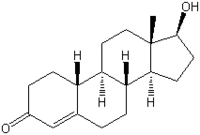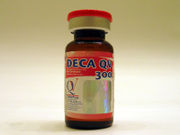A critical moment for Major League Baseball (MLB) is fast approaching. As the economic disparity between large- and small-market ball clubs grows to staggering proportions, so too does the difference in opinion between management and labor With ongoing negotiations seemingly nowhere near a peaceful resolution, the union is contemplating setting a date for a strike, perhaps in mid-August. A prolonged work stoppage could alienate fans like never before.
"All I can say is there remains a lot of work to do," says Donald Fehr, head of the players union. "But we're committed to doing it. On the players' side, a strike is the last resort You hope you never have to get to it."
If there is one common trait between the adversaries, it is an acute understanding of the ramifications of a work stoppage. Whether it lasts one day, one month or one year, both Fehr and MLB Commissioner Bud Selig know what a strike could do to the game. Bob DuPuy, baseball's chief operating officer, compares a work stoppage to "the detonation of a nuclear weapon."
Unfortunately, not much has been accomplished to prevent such an eventuality. Negotiators for the union and the owners have met sporadically during the last six months in an attempt to produce a new collective-bargaining agreement. (The 2002 season has been played without one in effect.) But the owners' primary proposals--an increase in revenue sharing from 20 percent to 50 percent and a 50 percent "luxury tax" on all teams with payrolls exceeding $98 million--have fallen on deaf ears. They aren't even going to attempt to negotiate a salary cap, a practice small-market owners would love but never will convince the union to accept.
The players, whose average salary is at an all-time high of $2.38 million, fear that the owners' proposed changes will drive down the free-agent market and make clubs less willing to shell out big bucks to top athletes. The union is willing to agree to 22.5 percent revenue sharing but has taken a hard-line stance against the luxury tax, which it equates with a true salary cap.
Making matters more complicated is the current hot-button issue of drug testing. Many are clamoring for mandatory drug testing on all major leaguers after remarks by retired MVPs Ken Caminiti and Jose Canseco that as many as half of professional ballplayers use steroids (see sidebar). The owners have added a drug-testing provision to their formal offer; the union has not publicly taken a stance but is wary of any act that might infringe on a player's privacy.
But why would players risk a punishing strike, particularly at this point in the season? Because if the matter remains unresolved through October, the union fears the owners will take matters into their own hands and implement their proposals without bargaining with the players--much as basketball owners did following the 1998 National Basketball Association Finals.
"In other words, they have a fight, but entirely of their own time and choosing and on their own turf," one union source says. "Bud conspicuously made a no-lockout pledge, which went to the end of this season but no further. We'd be pretty foolish to walk right into it."
That's not to say the union is committed to staging a walkout, even if it sets a hard-fast strike date. Such an announcement simply may speed up the negotiating process and create a much-needed sense of urgency. Then again, if the owners don't respond, baseball could face a public-relations fiasco.
"There's a tendency to look at history and draw parallels," says Fehr, referring to the 1994 strike. "And history is instructive, especially in this industry, where we've had so many difficulties. But you have to be careful not to presuppose that just because something happened the last time means it's going to happen the same way this time."
Nevertheless, everyone around the game questions whether baseball could recover from a lengthy labor battle, even though a run of historic events in the mid-to-late nineties helped save the sport from its near-implosion.
"The damage done in '94 was devastating, and we got lucky," DuPuy says. "We had the Yankees' run, David Wells' perfect game, Cai Ripken's streak, Mark McGwire and Sammy Sosa in 1998. That got people energized about baseball again. Who knows if we're going to get that lucky again? Everybody's scared about that."
RELATED ARTICLE: No labor pains for pro football.
Major League Baseball isn't the only sport troubled by labor unrest. National Hockey League (NHL) players skipped half the 1994-95 season and are contemplating a walkout in 2004. And the National Basketball Association (NBA) hasn't forgotten the pain of losing one-third of its 1998. 99 campaign to a work dispute.
Meanwhile, the National Football League (NFL), which hasn't had a season interrupted since 1987, recently extended its collective-bargaining agreement with its players through 2007. Why does football succeed where its counterparts fail?
Gene Upshaw is a major reason. Unlike his counterparts in baseball, basketball and hockey, the NFL Players Association (NFLPA) executive director isn't a lawyer. He moved straight from the playing field--he was a Hall of Fame guard for the Oakland Raiders from 1967-82--to the union's office in Washington.
"I didn't think Gene was going to be easy pickings because he had been a player," recalls Art Modell, then the owner of the Cleveland Browns and now owner of the Baltimore Ravens. "Gene brought an understanding of what makes players tick and an understanding of the game."
Upshaw's unparalleled labor success is a product of the leadership skills he displayed as a player--he was voted the Raiders' offensive captain as a rookie and their union representative in his fourth year--and the realization on both sides of the bargaining table after two strikes in six years that they were better off as partners instead of enemies.
"The five years after the 1987 strike were the toughest," says Upshaw, who succeeded attorney Ed Garvey in 1983 and helped bring free agency to the NFL. "We didn't have a union. We didn't have dues checkoff. We had lost some court cases. But we kept the organization together because we had built the confidence of the players in the NFLPA. We had the right guys as player reps. The players supported our licensing program. And they understood what the real issues were and why they were worth fighting for."
The NFL's system, including its teams' sharing of 63 percent of league revenues, might be the best in sports. Baseball has no salary cap, along with outrageous financial imbalances. The NHL also is capless, its players aren't true free agents until age 31 and the six Canadian franchises operate at a distinct economic disadvantage. The NBA guarantees contracts as baseball does and its free agency and cap resemble the NFL's, but the players don't receive as big a chunk of revenues.
Upshaw often talks to his counterparts in the other sports about common issues such as tax laws, worker's compensation and agent regulation but doesn't push his system on them. "The economics of football are so different," he says. "The revenue sharing among the owners is what makes the NFL so strong. No one wants labor peace more than [his fellow union heads], but they also want good deals and fair deals."
Which is true of the NFLPA at least through 2007, when Upshaw will retire.
DAVID ELFIN WRITES FOR Insight's SISTER DAILY, THE WASHINGTON TIMES.
RELATED ARTICLE: Beyond steroids.
By the time Major League Baseball gets around to testing for anabolic steroids, the league may be relatively free of Deca-Durabolin, Testoprirn-D and other tongue-twisting, testosterone-boosting concoctions. Of course, that doesn't mean the players will be any less juiced. A new era of sports doping is fast approaching--one in which genetic engineering helps athletes run faster, jump higher and hit more home runs than ever before.
"With the potential of genetic therapy, all types of current drug use could become obsolete," says Charles Yesalis, an epidemiologist at Penn State University and an expert on performance-enhancing drugs. "Literally, it's only limited by your imagination and knowledge of the human body."
The revolution is under way. The Human Genome Project--a comprehensive map of the body's genetic code--promises to transform medical science. Researchers are developing genetic therapies to treat broken bones, muscle tears and ligament damage. Performance enhancing sports applications aren't far behind.
Athletes soon may be able to increase their levels of erythropoietin (EPO), a hormone that boosts production of oxygen-carrying red blood cells, without ingesting or injecting the laboratory-made compounds. The trick? Inserting enhanced EPO-producing genes directly into the body--in effect, adding an extra production line to an athlete's natural hormone factory. In an effort to treat anemia, scientists already have introduced a modified EPO gene into mice, monkeys and baboons; reportedly, clinical trials in humans could begin within the next year.
"You put the gene into a virus carrier, and then use that virus to infect, say, mice," said Theodore Friedmann, chief of the Division of Molecular Genetics at the University of California, San Diego. "Wherever you injected the virus, at that site you get a production of EPO, which then gets into the blood circulation. When that gets to the bone marrow, it turns on red-blood-cell production."
But EPO is just the beginning. Four years ago, researchers in London discovered a gene that helps regulate the body's electrolyte levels and blood-vessel size, key factors in athletic endurance. They promptly dubbed it the "jock gene."
More recently, scientists at the University of Pennsylvania injected a mouse with an artificial gene that increased the production of insulin-like growth factor-1 (IGF-1), a protein that fosters muscle growth and repair. Dubbed "He-Man," the mouse quickly lived up to his moniker, putting on 60 percent more muscle mass than an average mouse. In one test, he carded three times his body weight. Two years later, He-Man's strength remained intact, and his body continued to crank out high levels of IGF-1--even though levels of the protein normally decline with advancing age.
The ramifications for sports are obvious: Enhance the gene, enhance the performance, not to mention the potential. "A famous geneticist once said, `If you want to be a champion, choose your parents well,'" notes Robert Ruhling, director of the Human Performance Research Laboratory at George Mason University in Fairfax, Va. "Now, we're trying to do that in a test tube."
PATRICK HRUBY WRITES FOR Insight's SISTER DAILY, THE WASHINGTON TIMES.
MARK ZUCKERMAN WRITES FOR Insight's SISTER DAILY, THE WASHINGTON TIMES.
COPYRIGHT 2002 News World Communications, Inc.
COPYRIGHT 2002 Gale Group



